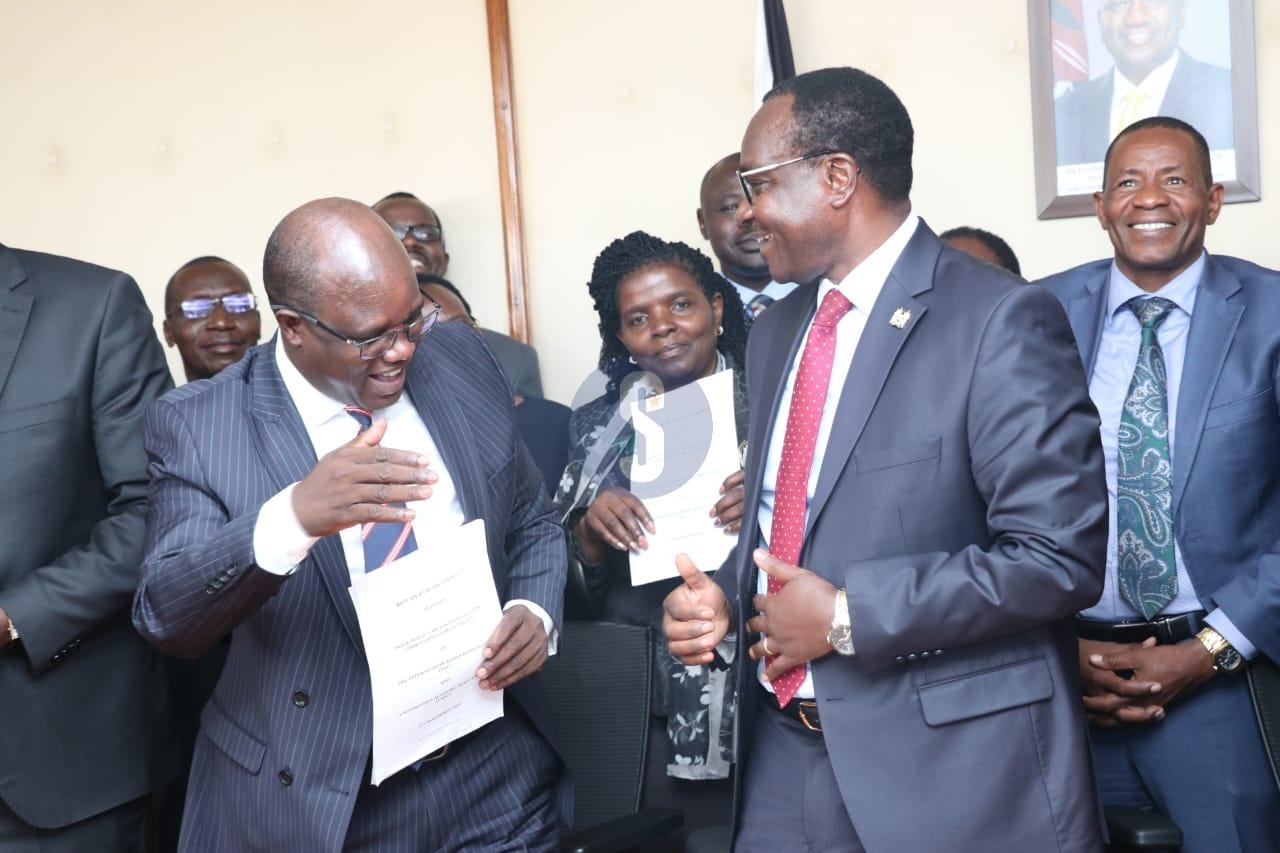
Members of Parliament have raised alarm over worsening floods and landslides across the country, calling for urgent humanitarian intervention and long-term measures to strengthen Kenya’s disaster preparedness and climate resilience.
The National Assembly’s Departmental Committee on Regional Development, chaired by Peter Lochakapong (Sigor), expressed concern over the calamities that have claimed lives, displaced hundreds, and destroyed homes, schools, roads, and livelihoods.
Addressing journalists at Parliament Buildings on Wednesday, the committee said the National Assembly is in the final stages of passing the Disaster Risk Management Bill, which will provide a legal and institutional framework for disaster preparedness, response, and recovery.
Once enacted, the law is expected to enhance coordination, resource mobilisation, and community resilience, particularly against climate-related disasters such as floods and landslides.
“This tragedy serves as a painful reminder of the urgent need to strengthen our disaster preparedness and climate resilience measures,” Lochakapong said.
Rongo MP Paul Abuor said the Committee plans to conduct an extensive fact-finding mission in the affected regions to assess the extent of the damage and gather firsthand accounts from victims.
He noted that most landslides have occurred in areas affected by deforestation, which has weakened soil stability.
“We have observed that deforestation is a major contributing factor to these landslides. Environmental conservation must be at the heart of our disaster mitigation efforts,” Abuor said.
Vice-Chairperson Liza Chelule conveyed condolences to families who lost loved ones and urged parents to be vigilant during the heavy rains, especially now that schools have closed for the December holidays.
“We want to urge parents, especially mothers, to keep a close watch over their children during this period to ensure they do not fall victim to flood-related accidents,” she said.
The Committee appealed to the international community, the private sector, and well-wishers to support relief operations through donations, technical assistance, and humanitarian aid.
“Together, we can and will rebuild stronger, safer, and more resilient communities for the future,” Chelule added.
The most affected regions include Chesongoch in Elgeyo Marakwet, Kimende Escarpment in Kiambu, Kamutungi in Embu, Tinderet in Nandi, and Narok South, with additional flood emergencies reported in Tana River, Laikipia, and the Lake Basin region.
Last weekend, over 28 people were reported dead in two villages in Keiyo North, Elgeyo Marakwet County, following heavy rains that triggered mudslides.
The Committee urged Kenyans to observe safety guidelines, including avoiding flooded roads and rivers, steering clear of steep slopes and low-lying areas, cooperating with evacuation teams, and following official weather updates from the Kenya Meteorological Department and the Ministry of Interior.
“The Government of Kenya has activated multi-agency emergency response protocols involving the National and County Governments, the National Disaster Management Unit (NDMU), the Kenya Defence Forces, the Kenya Red Cross, and other humanitarian partners. We want those tasked with the humanitarian efforts to move with speed and ensure that no more lives are lost,” Lochakapong said.
Interior Cabinet Secretary Kipchumba Murkomen, who toured affected areas to assess the damage, attributed the devastating Elgeyo Marakwet landslides to years of deforestation and unsustainable farming practices.
Speaking in Eldoret last Sunday, Murkomen described the tragedy as a national catastrophe and urged residents to heed government safety advisories amid the ongoing heavy rains.
“The biggest problem with this issue is deforestation and land use,” Murkomen said. “In some regions, farming practices have worsened soil erosion. It would be safer to consider crops such as tea, which help prevent soil instability.”



















